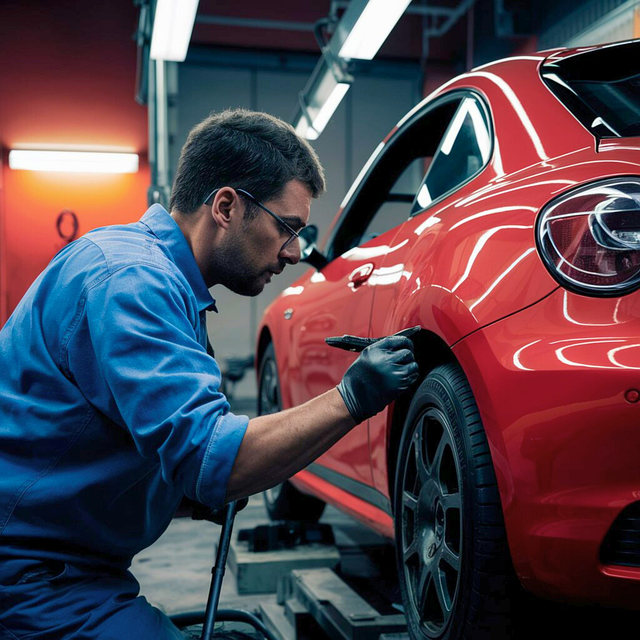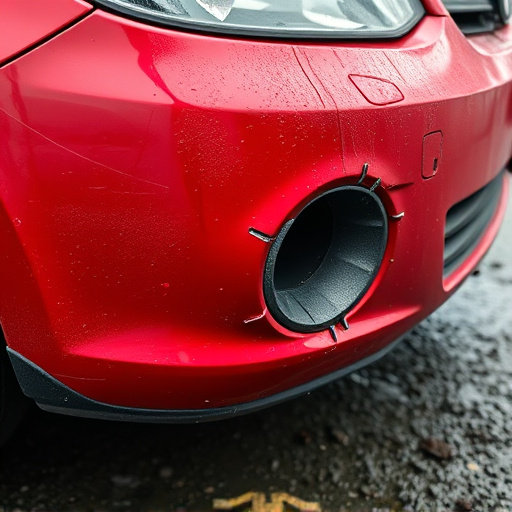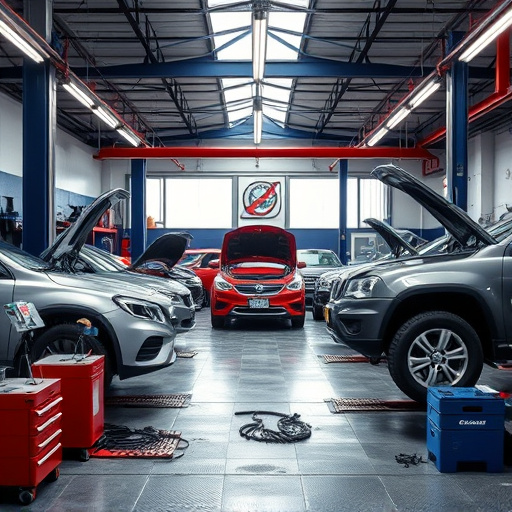The three-stage paint system is a meticulous, three-step process for vehicle reconditioning, emphasizing quality and durability. It includes surface preparation, primer application, and topcoat finishing, ensuring enhanced paint adhesion, improved aesthetics, longer-lasting results, and protection against future damage. Collision centers adopt this system to meet legal compliance and industry standards, with benefits including precise color matching and structural integrity through frame straightening techniques. Its adaptability makes it a versatile solution for various sectors, solidifying its position as an industry favorite in auto care.
“The three-stage paint system emerges as a revolutionary approach in industrial coatings, offering enhanced performance and environmental sustainability. This article delves into the intricate details of this system, exploring its definition, key components, and widespread applications across sectors. We also dissect critical legal compliance considerations, including environmental regulations, safety standards, and labeling protocols, essential for responsible paint production and distribution. Furthermore, best practices for implementing this system are provided, offering a comprehensive guide to setup, employee training, and continuous improvement.”
- Understanding the Three-Stage Paint System
- – Definition and key components
- – Advantages and applications in various industries
Understanding the Three-Stage Paint System

The three-stage paint system is a comprehensive approach to vehicle reconditioning, particularly in auto maintenance and collision center settings. This method involves three distinct steps: preparation, primer application, and topcoat finishing. During the preparation stage, the surface is thoroughly cleaned, sanded, and repaired to ensure optimal bonding with subsequent layers. This meticulous process forms the foundation for a durable finish.
The use of this system offers several advantages, including enhanced paint adhesion, improved aesthetics, and longer-lasting results. It’s not just about achieving a smooth, glossy finish; it’s also about protecting the vehicle’s surface from future damage. Moreover, many collision centers and auto maintenance facilities adopt this system to cater to legal compliance requirements regarding automotive refinishing, ensuring that every repair is up to industry standards and safety regulations, especially when offering tire services.
– Definition and key components

A three-stage paint system is a sophisticated approach to automotive refinishing, designed to deliver high-quality, durable finishes. This process involves three distinct stages: surface preparation, priming, and top coating. During surface preparation, the auto body is thoroughly cleaned, sanded, and repaired to ensure a smooth base for painting. This stage is crucial as it lays the foundation for the final aesthetic. Priming involves applying an undercoat that primes the surface for paint adhesion, blocking any residual odors and preventing corrosion. Top coating, the final stage, employs a durable finish that not only enhances the car’s appearance but also protects its exterior from environmental elements.
This system is a far cry from traditional one-step painting methods, offering superior results in terms of color accuracy, longevity, and overall quality. It’s particularly beneficial for auto body painting services, as it allows technicians to achieve intricate designs and precise colors. Moreover, frame straightening techniques often complement this process, ensuring that any structural damage is rectified before application, resulting in a seamless final product.
– Advantages and applications in various industries

The Three-Stage Paint System offers numerous advantages that make it a preferred choice across diverse industries. This innovative system involves three distinct stages: preparation, priming, and finishing. Each stage is meticulously designed to ensure optimal adhesion, durability, and aesthetics. In car repair services and auto detailing, this system is invaluable for restoring vehicles to their original condition or enhancing their appearance. It provides a smooth surface, enhances color accuracy during repainting, and ensures long-lasting results.
Moreover, the three-stage paint system finds extensive applications in vehicle collision repair, where precision and quality are paramount. By meticulously preparing damaged surfaces, applying a robust primer, and finishing with high-quality paints, this method guarantees that repaired vehicles meet or exceed their pre-accident condition. Its versatility allows for customization to meet specific industry standards and customer expectations, making it a versatile solution in auto care and repair.
The three-stage paint system emerges as a game-changer across diverse industries, offering enhanced durability, versatility, and aesthetic appeal. Its structured approach, comprising priming, coating, and sealing layers, ensures legal compliance with environmental regulations by minimizing volatile organic compound (VOC) emissions. This system’s growing popularity underscores its ability to revolutionize painting processes while promoting sustainability and adherence to evolving legal standards.













